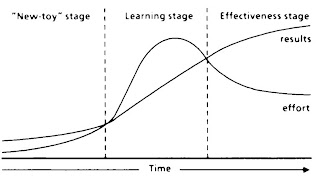BusinessWeek reports an interested trend as more professionals create their online presence using these tools. A growing number of statups are aggregating information from various online sites like FaceBook, MySpace, LinkedIn, Plaxo and others to "track people and their reputations" as well as provide a single source for editing and maintaining their online profiles.
The challenge is around privacy and accuracy. For example, I recently received a request to join a colleagues network on Spock. When I arrived, I found several threads from other profiles I had created online, but also threads for others with my name, but who are clearly not me.
For the record, while these are real facts for others that share my name, they should not be showing up on my page on the Spock site:
These can be confirmed by voting on or off one's profile, but the individual must go to the trouble to do this on a regular basis.
From a workplace perspective, what should be taken into consideration when creating online profiles and how can you protect not only your privacy but also your credibility as those who do not know you may become confused as they are unable to distinguish names and who they belong to?
SOURCE: Stead, Deborah, ed. (2007, September 24). It Isn't Just YourSpace Anymore. BusinessWeek, 13


 (Fig. 1)
(Fig. 1) (Fig. 2)
(Fig. 2)



